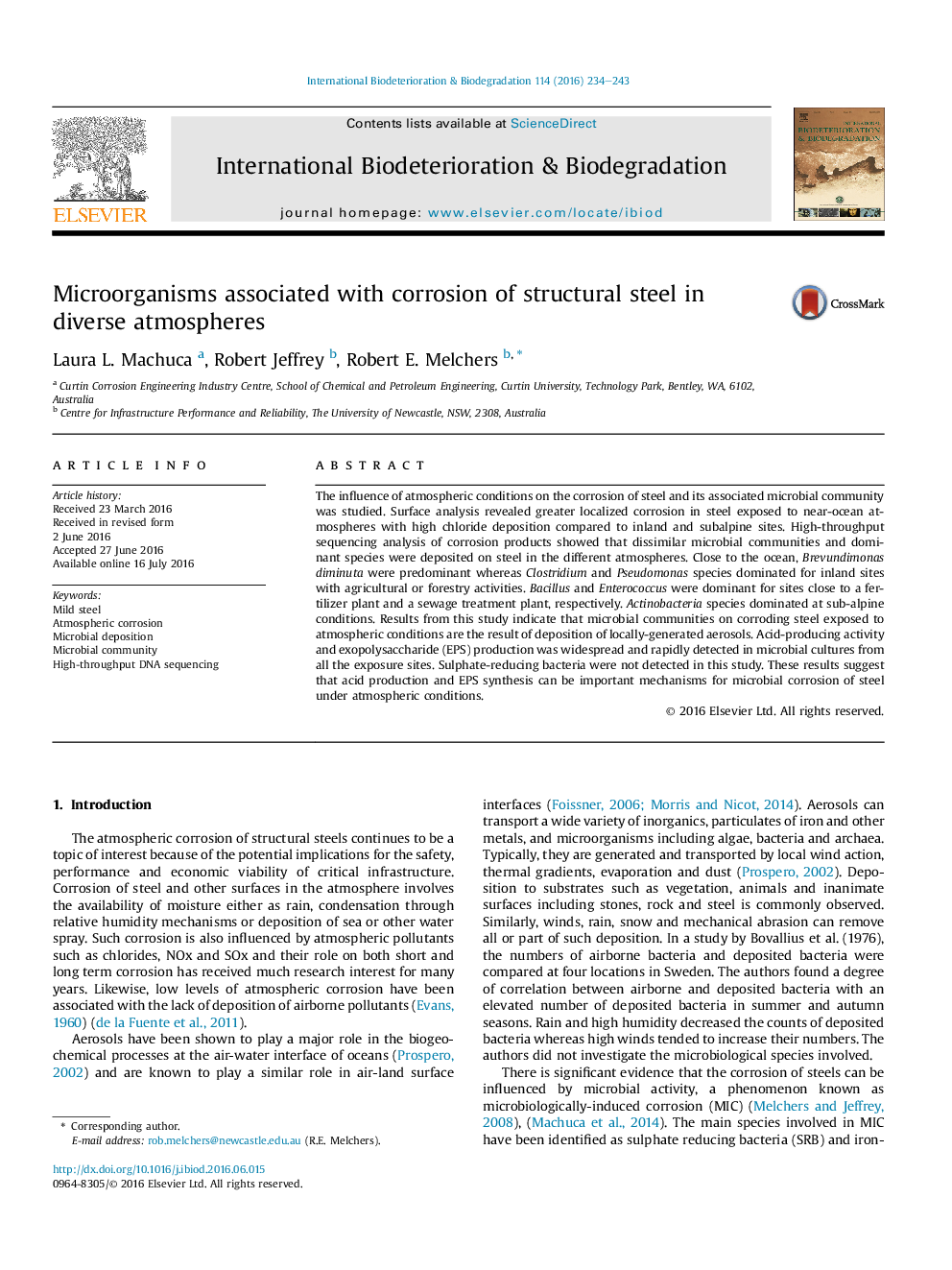| Article ID | Journal | Published Year | Pages | File Type |
|---|---|---|---|---|
| 4364136 | International Biodeterioration & Biodegradation | 2016 | 10 Pages |
•Very different microbial communities observed in atmospheric rusts after 3 months.•Microbial communities resulted mainly from deposition of locally generated aerosols.•16S rDNA targeted metagenomic analysis was used.•Acid-producing activity and exopolysaccharide (EPS) production was widespread.
The influence of atmospheric conditions on the corrosion of steel and its associated microbial community was studied. Surface analysis revealed greater localized corrosion in steel exposed to near-ocean atmospheres with high chloride deposition compared to inland and subalpine sites. High-throughput sequencing analysis of corrosion products showed that dissimilar microbial communities and dominant species were deposited on steel in the different atmospheres. Close to the ocean, Brevundimonas diminuta were predominant whereas Clostridium and Pseudomonas species dominated for inland sites with agricultural or forestry activities. Bacillus and Enterococcus were dominant for sites close to a fertilizer plant and a sewage treatment plant, respectively. Actinobacteria species dominated at sub-alpine conditions. Results from this study indicate that microbial communities on corroding steel exposed to atmospheric conditions are the result of deposition of locally-generated aerosols. Acid-producing activity and exopolysaccharide (EPS) production was widespread and rapidly detected in microbial cultures from all the exposure sites. Sulphate-reducing bacteria were not detected in this study. These results suggest that acid production and EPS synthesis can be important mechanisms for microbial corrosion of steel under atmospheric conditions.
